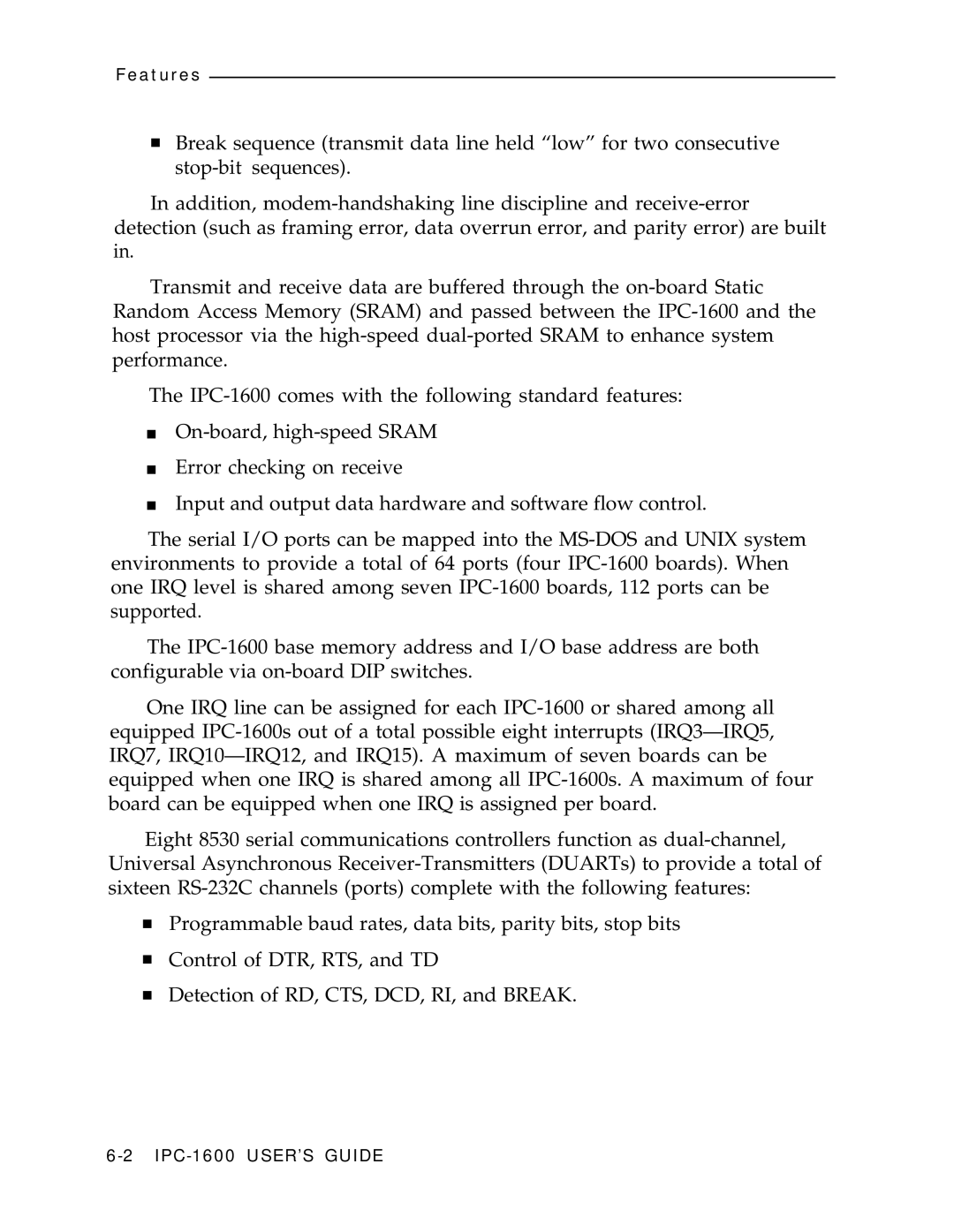Features
■Break sequence (transmit data line held “low” for two consecutive stop-bit sequences).
In addition, modem-handshaking line discipline and receive-error detection (such as framing error, data overrun error, and parity error) are built in.
Transmit and receive data are buffered through the on-board Static Random Access Memory (SRAM) and passed between the IPC-1600 and the host processor via the high-speed dual-ported SRAM to enhance system performance.
The IPC-1600 comes with the following standard features:
■On-board, high-speed SRAM
■Error checking on receive
■Input and output data hardware and software flow control.
The serial I/O ports can be mapped into the MS-DOS and UNIX system environments to provide a total of 64 ports (four IPC-1600 boards). When one IRQ level is shared among seven IPC-1600 boards, 112 ports can be supported.
The IPC-1600 base memory address and I/O base address are both configurable via on-board DIP switches.
One IRQ line can be assigned for each IPC-1600 or shared among all equipped IPC-1600s out of a total possible eight interrupts (IRQ3—IRQ5, IRQ7, IRQ10—IRQ12, and IRQ15). A maximum of seven boards can be equipped when one IRQ is shared among all IPC-1600s. A maximum of four board can be equipped when one IRQ is assigned per board.
Eight 8530 serial communications controllers function as dual-channel,
Universal Asynchronous Receiver-Transmitters (DUARTs) to provide a total of sixteen RS-232C channels (ports) complete with the following features:
■Programmable baud rates, data bits, parity bits, stop bits
■Control of DTR, RTS, and TD
■Detection of RD, CTS, DCD, RI, and BREAK.
